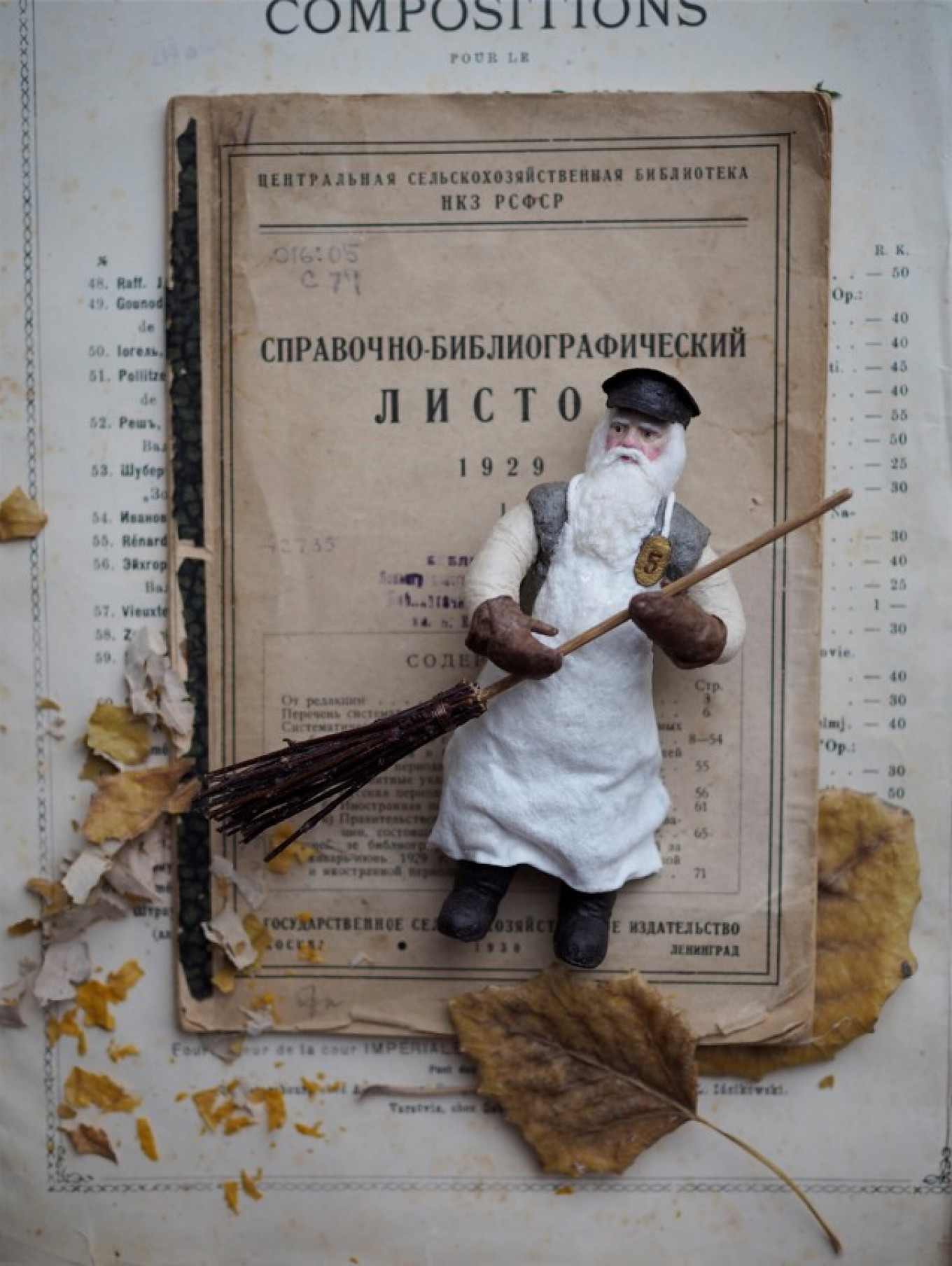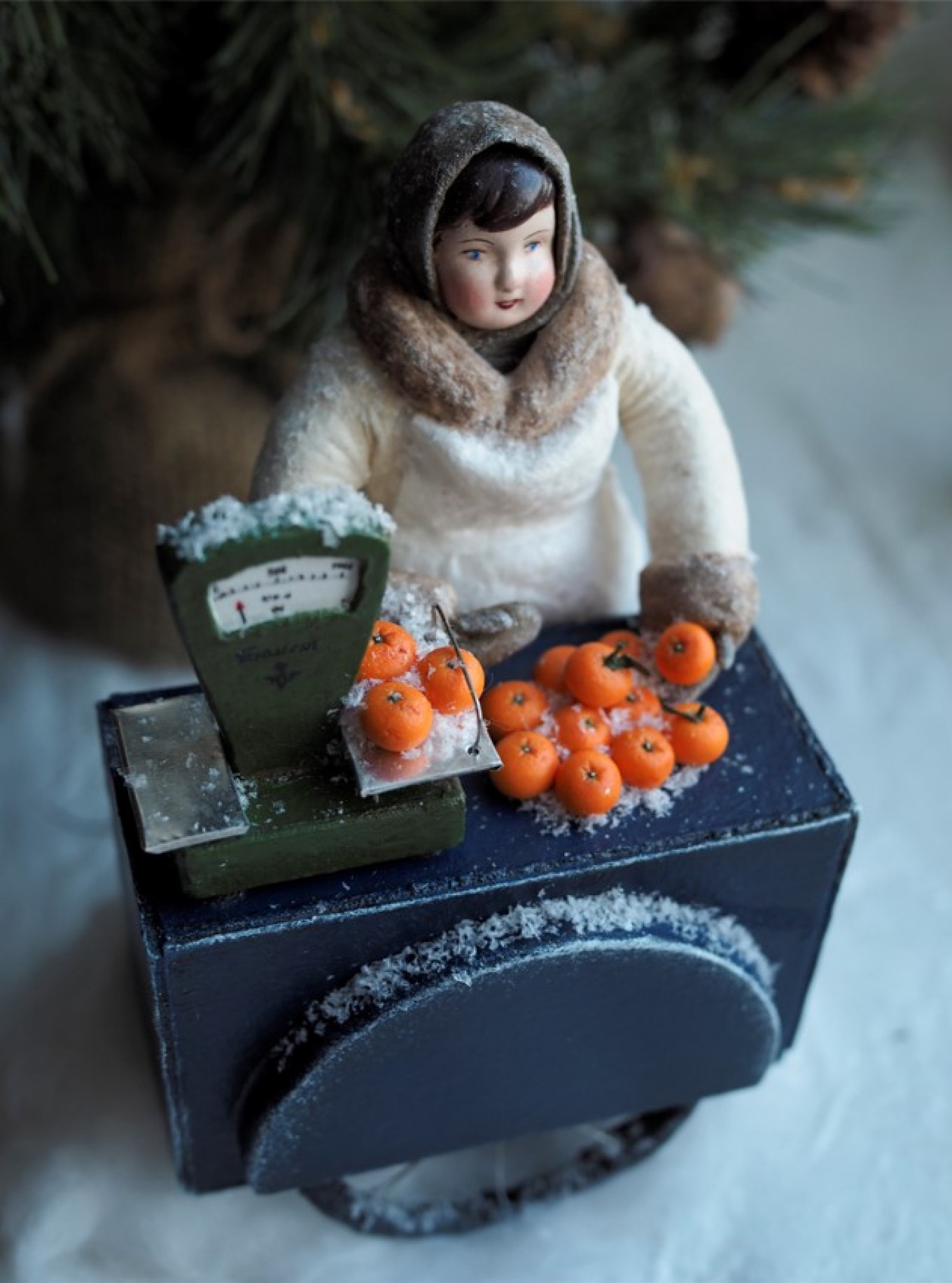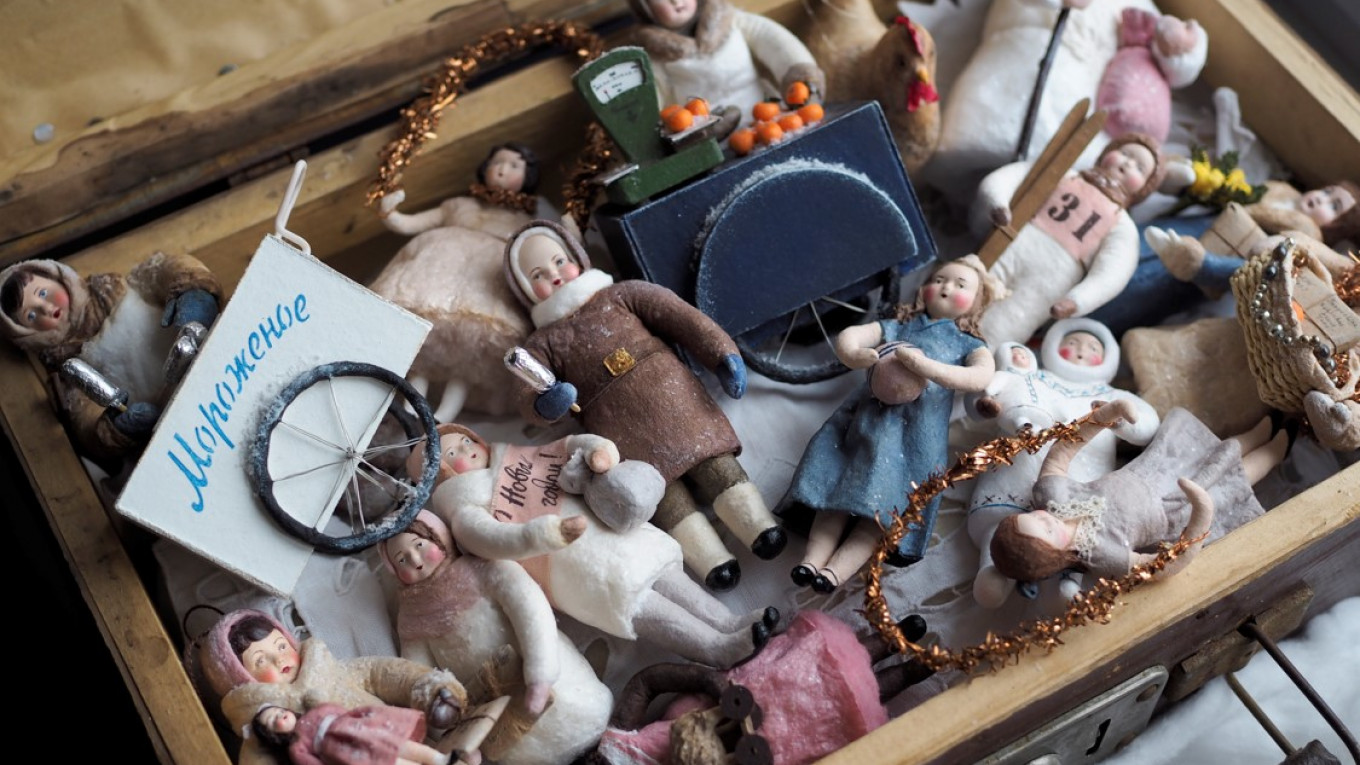Anastasia Ryabova was preparing to meet New Year 2013 with her husband in Voronezh. “We had just moved from Grodno (Belarus) and weren’t ready to celebrate the New Year. At the last moment, we bought a small fir in a pot, and since we didn’t have any ornaments, we decorated it with bows. That was when I realized that I want to have my own New Year’s tree and my own collection of ornaments,” Ryabova told The Moscow Times.
Before the next new year, she bought a small tree and beautiful stand, but she couldn’t find ornaments that she liked. Her husband suggested she try an internet auction, where she bought about 10 glass ornaments from the Soviet period. They are still some of her favorites, and they began her collection of New Year's decorations.

From artels to homes
Cotton-wool New Year’s decorations appeared in Russia in the 19th century as an alternative to expensive glass ornaments. They were mostly made by craftsmen in artels. After the revolution in 1917, production temporarily stopped but then resumed. At the end of the 20th century, cotton-wool New Year’s decorations became a thing of the past, but now they are becoming popular again.
“Once, when I was three or four years old, my parents and I celebrated the New Year in the village with my grandmother. She had a Ded Moroz (Grandfather Frost) made of cotton wool, and I still remember how it felt to touch. This is the magic I wanted to remember,” Ryabova said.
In 2013, she decided to try making her own cotton-wool New Year’s decorations. She found only one video on the Internet where a teacher taught children to make a mushroom out of cotton wool. In a book she found the recipe for wheat paste to hold it all together. She tried to make an ornament of a little man, but she didn't like the result and put it aside until next year.
Now Anastasia Ryabova loves making toy people. Her favorite is an ice-cream vendor. A year passed from idea to implementation. “This image contains everything that I love: the anticipation of the holiday, winter, childhood, nostalgia for the past.”
One of the most popular decorations is a postwoman, which she has crafted few times. The tangerine vendor with a cart is one of the most difficult works because there are miniature tangerines with leaves, trolley wheels, and scales.
A cotton-wool ornament needs to dry between stages of creation, so on average, an ornament takes 2 to 5 days. Ryabova makes about 10 of them a month.

A master class
The Moscow Times asked Ryabova to give a master class for readers. Here’s how to make a snowman.
The essentials are cotton wool, wire, wheat paste, and a set of watercolors.
“You take cotton wool and make three balls of different sizes, wrap each ball with wire, and connect them to each other with a wheat paste or a needle and thread. This is the blank slate of the ornament. If you use wheat paste, wait until it is completely dry. Then you pull apart cotton wool into thin layers, apply a layer and cover it with wheat paste. You do that step by step: pulling a layer of wool, placing it where you want it, and covering it with paste. Then you make the arms, legs, and nose. You can make a scarf or any other decoration. Then you paint on the eyes, a smile, and so on. The snowman is ready!”
The ornament should not get damp or be in direct sunlight. It’s best to store them in a cardboard box away from children and pets.
On Ryabova’s New Year’s tree there are many glass ornaments; decorations made from cardboard papier-mâché, and fabric; fire-crackers; glass beads; garlands, and a wooden Nutcracker. There are many cotton ornaments, but only one made by her: her first ice-cream vendor.

In the coming year, Ryabova wants to make more animals, household items, European-style decorations. She also wants to try to work with papier-mâché.
Her advice for everyone? “Never stop believing in magic, never stop believing in miracles! Merry Christmas and Happy New Year! May all your dreams come true!”
For more information about her New Year’s tree ornaments, see Ryabova’s Instagram.
A Message from The Moscow Times:
Dear readers,
We are facing unprecedented challenges. Russia's Prosecutor General's Office has designated The Moscow Times as an "undesirable" organization, criminalizing our work and putting our staff at risk of prosecution. This follows our earlier unjust labeling as a "foreign agent."
These actions are direct attempts to silence independent journalism in Russia. The authorities claim our work "discredits the decisions of the Russian leadership." We see things differently: we strive to provide accurate, unbiased reporting on Russia.
We, the journalists of The Moscow Times, refuse to be silenced. But to continue our work, we need your help.
Your support, no matter how small, makes a world of difference. If you can, please support us monthly starting from just $2. It's quick to set up, and every contribution makes a significant impact.
By supporting The Moscow Times, you're defending open, independent journalism in the face of repression. Thank you for standing with us.
Remind me later.






